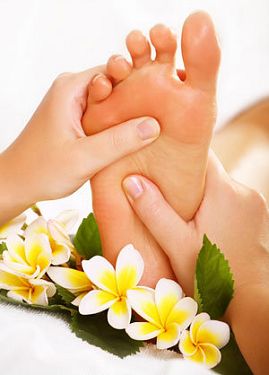Foot Health, Common Foot Problems and Diabetic Foot Care
I am a qualified, insured and DBS checked Foot Health Practitioner. I have a Diploma in Foot Health from The SMAE Institute.
I offer the following services at my fully equipped treatment room in Buntingford and can also offer mobile visits;
Nail cutting & filing
Callus reduction
Corn removal
Fungal nail treatment
Verrucae treatment
Reduction of thickened nails
Diabetic foot care
What is the difference between a Podiatrist and a foot health practitioner?
They can both offer nail cutting, verruca and fungal treatments and corn and callus removal. Diabetic foot assessments and monitoring are also carried out by both along with general advice on footcare and footwear. However, the title Podiatrist can only be used by those who have completed the appropriate training and registered with the Health & Care Professional Council. A Foot Health Practitioner is diploma trained and is qualified to work in the private sector.
A full medical history will be taken on the first visit as well as neuro-vascular assessments on an ongoing basis and a treatment plan devised according to your needs. Treatments are recommended every 6-8 weeks to maintain foot health.
Common Foot Problems & treatments offered
Verrucae (warts)
Verrucae occur by a virus entering the skin. For this to occur the skin needs to be in a susceptible state – excessively wet or macerated or have micro tears. If verrucae are not being problematic they can be left and, in time, the body’s immune response will eradicate them. However, when verrucae are on the weight-bearing surfaces of the feet, they can develop an overlying area of calloused skin which can make walking painful. In these cases, reducing the callus build-up on a regular basis can help with the discomfort. Zinc oxide tape and caustic products can also be used on verrucae but have varying degrees of success.
Corns and Callus
Corns and calluses form as a result of excess pressure. The body recognizes this extra pressure and forms layers of skin cells to protect these areas. If the buildup of skin becomes great enough, it can result in pain.
A corn is a small, circular, hard particle or seed. On the foot, this usually occurs over a bony area or on the tops of the toes. Callus is a thickened area of skin that is flatter and more spread out. It usually occurs on the bottom of the foot, most commonly on the balls of the feet, sides of the feet and heels.
Corns and calluses most commonly occur due to ill-fitting footwear. They can be reduced by de-briding with a scalpel but will continue to reoccur unless the underlying problem is resolved.
Fungal Nail Infection
This is a fungal infection of the skin beneath your nail (the nail bed) and it causes visual and physical changes to the nail plate, namely discolouration and a thickening of the nail. Most commonly, nail fungus occurs alongside a fungal infection of the skin on the foot which causes red, itchy and flaky patches of skin and is commonly known as Athlete’s Foot.
Fungal nail infection is typically difficult to treat as the nail plate acts as a physical barrier to where the infection is – on the nail bed. Treatments include cutting the nail back as far as possible and applying a spray, making tiny holes in the nail to enable the treatment spray to penetrate to the nail bed or taking oral medication for several months to eradicate the infection.
Fissures (Skin Cracks)
Heel fissures are typically caused by extremely dry skin. The deep, painful cracks form on the bottom of the heel and can make it painful to walk. They often occur secondary to callus, which results from repetitive friction. If left untreated, fissures can bleed and become deep which may lead to bacterial infections. This can lead to medical complications, especially for diabetics.
To ease the discomfort; gently use a file or pumice to remove any roughness, moisturise the skin twice a day and try to prevent pressure on heels when sitting down, or lying in bed.
Diabetic Foot Care
It is extremely important that diabetic patients take extra care of their feet as they are at increased risk of damage to their nerves, leading to reduced sensation in their lower limb and damage to their circulation (vascular disease).
To help prevent problems, where possible, the feet should be checked daily for signs of swelling, inflammation, cuts, bruising or anything out of the ordinary.
People with diabetes should never walk barefoot and should take care with their footwear to ensure it fits properly, has a wide toe box and does not have any rough seams or linings that could cause damage to the foot.
Book a visit with Body & Sole for a neurovascular assessment and to help maintain healthy feet.
